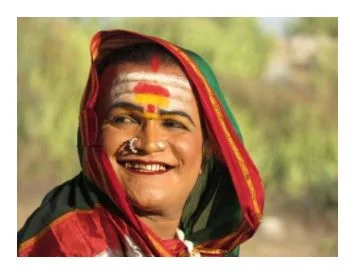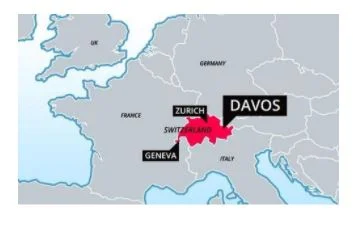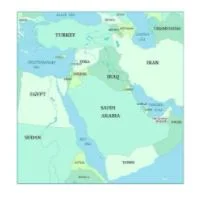IASbaba's Daily Current Affairs Analysis
Archives
(PRELIMS + MAINS FOCUS)
Dhannipur Mosque project launched
Part of: GS Prelims and GS-I – Culture
In news
- The Dhannipur mosque project was formally launched on Republic Day at the five-acre plot in Dhannipur village of Ayodhya, Uttar Pradesh.
Key takeaways
- The plot was allotted by the Uttar Pradesh government on the directions of the Supreme Court in the Babri Masjid Ram Janmabhoomi title suit.
- The Indo-Islamic Cultural Foundation (IICF) is overseeing the construction of the mosque.
- The project would take around 30 months to be completed.
- The project comprises three parts: a mosque based on a modern design; a multi-speciality 200-bed hospital and community kitchen; and an Indo-Islamic Cultural Research Centre.
Related articles:
- Ram Temple History & Significance: Click here

Image source : Click here
Data Privacy can take the form of non-price competition: CCI
Part of: GS Prelims and GS-III – Cyber Security
In news
- A study by the Competition Commission of India (CCI) has said that the Data privacy can take the form of non-price competition and abuse of dominance can lower privacy protection,
Key takeaways
- CCI noted that an aspect of data in the context of competition in digital communications market is the conflict between allowing access and protecting consumer privacy.
- Abuse of dominance can take the form of lowering the privacy protection and therefore fall within the ambit of antitrust as low privacy standard implies lack of consumer welfare.
- The study also made observations about other non-price factors such as quality of service (QoS), data speeds and bundled offerings, which are likely to be the new drivers of competitive rivalry between service providers in telecom sector in addition to just price.
Important value additions
Competition Commission of India (CCI)
- It is a statutory body of the Government of India.
- It is responsible for enforcing The Competition Act, 2002 throughout India.
- It prevents activities that have an appreciable adverse effect on competition in India.
- It was established on 14 October 2003 and became fully functional in May 2009.
- CCI consists of a Chairperson and 6 Members appointed by the Central Government.
- It is the duty of the Commission to:
- eliminate practices having adverse effect on competition,
- promote and sustain competition,
- protect the interests of consumers,
- ensure freedom of trade in the markets of India.
Manjamma Jogati : Padma Shri awardee who popularised rural folk arts
Part of: GS Prelims and GS-I – Culture
In news
- Manjamma Jogati is a Padma Shri awardee who is a transgender from Karnataka.
- She has over the past many decades practised and single-handedly popularised rural folk arts.
Key takeaways
- Overcoming personal odds, Manjamma Jogati popularised these art forms, especially the Jogati Nritya and Janapada songs, practiced in rural Karnataka, Maharashtra, and parts of Andhra Pradesh.
- She began to identify as a woman in her teens.
- She was made a part of a transgender community in rural Deccan that reveres the fiery Goddess Renuka Yellamma.
- Members of this community are considered married to the goddess.
- The community’s lifestyle and the plight of its members were highlighted in the national award-winning 2009 Marathi movie Jogwa.

Image source: Click here
World Economic Forum’s Davos Dialogue
Part of: GS Prelims and GS-II – International Relations; GS-III – Economy
In news
- Indian Prime Minister will address the World Economic Forum’s Davos Dialogue on 28th January, 2021 via video conferencing.
Important value additions
- The Davos Dialogues agenda marks the launch of the World Economic Forum’s (WEF) Great Reset Initiative in the post COVID world.
- WEF is based in Cologny-Geneva, Switzerland.
- It is an NGO, founded in 1971.
- The WEF hosts an annual meeting at the end of January in Davos, a mountain resort in Graubünden, in the eastern Alps region of Switzerland.

Image source: Click here
CCEA gives its approval for MSP of copra for year 2021
Part of: GS Prelims and GS-III – Agriculture
In news
- The Cabinet Committee on Economic Affairs has given its approval for the Minimum Support Price (MSP) of copra for 2021.
Key takeaways
- Copra is the dried meat or kernel of the coconut, which is the fruit of the coconut palm (Cocos nucifera).
- Coconut oil is extracted from copra, making it an important agricultural commodity for many coconut-producing countries.
- The MSP for Fair Average Quality (FAQ) of milling copra has been increased, by Rs.375/-, to Rs. 10335/- per quintal for 2021 season from Rs. 9960/- per quintal in 2020.
- The approval is based on recommendations of the Commission for Agricultural Costs and Prices (CACP).
- The increase in MSP for copra for 2021 season is in line with the principle of fixing the MSP at a level of at least 1.5 times the all India weighted average cost of production which was announced by the Government in the Budget 2018-19.
Do you know?
- The National Agricultural Cooperative Marketing Federation of India Limited (NAFED) and National Cooperative Consumer Federation of India Limited (NCCF) will continue to act as Central Nodal Agencies to undertake price support operations at the MSP in the coconut growing States.
Important value addition
National Agricultural Cooperative Marketing Federation of India Ltd (NAFED)
- It is an apex organization of marketing cooperatives for agricultural produce in India.
- It was founded on 2nd October 1958.
- It is registered under the Multi-State Co-operative Societies Act, 2002.
- NAFED is now one of the largest procurement as well as marketing agencies for agricultural products in India.
- Objectives: (1) To organize, promote and develop marketing, processing and storage of agricultural, horticultural and forest produce; (2) To distribute agricultural machinery, implements and other inputs; (3) To act and assist for technical advice in agricultural production
Future Investment Initiative Forum
Part of: GS Prelims and GS-II – International Relations; GS-III – Economy
In news
- Union Minister for Health and Family Welfare addressed the 4th edition of the Future Investment Initiative Forum.
Important value additions
- The Future Investment Initiative (FII) is an annual investment forum held in Riyadh, Saudi Arabia, to discuss trends in the world economy and investment environment.
- It is hosted by the Public Investment Fund of Saudi Arabia (PIF).
- The first event was in October 2017.
- The purpose of this year’s forum was to find solutions on how business and government can expand access to healthcare, train healthcare workers, remove regulatory barriers and encourage investment in advanced health technologies

Image source: Click here
Place in news: Sigur Plateau
Part of: GS Prelims and GS-III – Environment
In News
- The Supreme Court appointed conservationist Nandita Hazarika as Member of a Technical Committee constituted by it on October 14, 2020 to hear complaints by land owners against the action taken by the Nilgris Collector, which included “arbitrary variance in acreage of the elephant corridor.”
Key takeaways
- On October 14, SC upheld the Tamil Nadu government’s authority to notify an ‘elephant corridor’ and protect the migratory path of the animals through the Nilgiri biosphere Reserve.
- The corridor is situated in the ecologically fragile Sigur plateau.
Do you know?
- Sigur Plateau is a plateau in the north and east of Nilgiri District in the Nilgiri Hills of Tamil Nadu.
- It connects the Western and the Eastern Ghats and sustains elephant populations and their genetic diversity.
- It has the Nilgiri Hills on its southwestern side and the Moyar River Valley on its north-eastern side.
- The elephants cross the plateau in search of food and water.

Image source: Click here
(Mains Focus)
GOVERNANCE/ SOCIETY
Topic:
- GS-2: Development processes and the development industry —the role of NGOs, SHGs, various groups and associations
- GS-2: Government policies and interventions for development in various sectors and issues arising out of their design and implementation.
Republic Day Violence
Context: The Delhi Police has detained 200 people in connection with the violence during the Republic Day tractor rally. More than 300 policemen were injured in the violence which took place mostly in and around Red Fort.
What exactly happened?
- Background of incident: For nearly two month farmers primarily from Punjab had been camping on the outskirts of New Delhi protesting against the new farm laws. Multiple rounds of negotiations between the government and the farmers’ unions have failed.
- Tractor Rally Planned: Protesting farmers had planned for tractor rally towards New Delhi on Republic day so as to express their demands and make their voices heard. It was a historic parade by lakhs of farmers and tractors.
- Rally Took Violent Turn: While the tractor rally initially began peacefully, a section of protesters broke through police barricades and entered parts of the national capital not permitted for their protest. Clashes between the police and protesters took place at various places that left nearly 400 police personnel injured.
- Deviation from agreed path & time: The path taken by unruly section reportedly deviated from the route that farmers’ unions had agreed upon in their talks with the Delhi Police. Also, farmers decided to enter the capital ahead of the permitted time, resulting in police launching tear gas and baton attacks on them.
- Religious Flag at Red Fort: Defying elaborate security arrangements in place for the Republic Day military parade, the protesters entered the Red Fort, where the predominantly Sikh farmers also installed a religious flag.
- Law and Order Control measures: The massive protests forced the shutting down of several metro stations, while internet services were suspended in many areas of the capital and its adjoining areas. Police lathicharged and used tear gas to control the situation by night.
- Cases registered: The police have filed FIRs naming a number of senior farm leaders who had held talks with the government and who signed an undertaking promising to follow the conditions set for the parades.
Critical Analysis of the incident
- Fatigued Agitators: The chances of fatigued agitators breaking loose were high as were the possibilities of vested interests triggering violence. Therefore, the leaders of protests should have been more conscious about this.
- Massive Protest badly coordinated by farm leadership: The leadership, itself an association of disparate individuals and organisations, should have been more realistic about its capacity to manage such a gathering.
- Violent deviation by a handful: The chaos and mindless violence unleashed on the national capital by a section of protesting farmers on Republic Day were abhorrent. It is plausible that agents provocateurs infiltrated the farmers’ march and derailed the entire plan leading to violence.
- Restraint by Police: In the end, unruly elements took over the streets of Delhi. They broke barricades, thrashed, and tried to mow down police personnel. The police resorted to lathi charge and used tear gas, but, given the circumstances, showed restraint by not going for firing & other harsh measures.
- Change in plans for protesting farmers: Two farmer unions withdraw from agitation against farm laws over R-Day violence. The unions have cancelled their plans to march to Parliament on February 1, when the Union Budget will be presented, but have vowed to continue their agitation in a peaceful manner.
- Can alter negotiations with government: The violence that was unleashed during tractor rally has brought disrepute to the agitating farmers and there are efforts made to discredit their movement & demands. In due course of time, it can alter the way government engages with protesting farmers for negotiation.
Way Ahead
- Proper Investigation: The Delhi police must investigate and hold to account individuals and groups responsible for the violence. Farmer leaders have the unenviable task of cooperating with the police in the investigation.
- Preventing Communal Overtones: False friends and real enemies of the agitators have painted them with a communal brush (hoisting of religious flag). Bringing the culprits to book is essential not only to salvage the reputation of an agitation that had remained largely peaceful for nearly two months but also to nip in the bud a dangerous communal slant before it slips out of control.
- Maximalist position of protestors needs change: The agitators want the laws to go lock, stock, and barrel but their maximalist approach is unhelpful. They must discontinue the protest for now and disperse, while reserving the option of restarting it later. They should consider options short of a complete repeal of the laws.
- Centre must continue with negotiations: The Centre must consider more concessions, including the suspension of the laws until a broader agreement can be arrived at. It must make more efforts to allay the fears of those most affected by these reforms.
Conclusion
The Centre has said it would continue to engage the protesters in negotiations. The offer of the government to keep in abeyance for up to 18 months the three controversial farm laws that are at the heart of the current face-off remains an opportunity for the leaders to seek a negotiated settlement
Connecting the dots:
- Why farmers are protesting against farm laws: Click here and here
- Why earlier government negotiations have failed: Click here
- What is the long term solution advocated by experts: Click here
ECONOMY/ GOVERNANCE
Topic:
- GS-3: Indian Economy and issues relating to planning, mobilization, of resources, growth, development and employment.
- GS-3: Inclusive growth and issues arising from it.
Troubling trends: On widening inequality
Context: The world economy is slowly recovering from the devastation caused by the COVID-19 pandemic, but that is only partial solace.
Issues:
- Uneven Recovery: The recovery is uneven among countries, and within countries. For example: The U.S. and China are expected to grow by 5% and almost 11%, respectively but Turkey’s economy is projected to grow by 0.4%.
- Rising Inequality: In spite of differential economic recovery across the world, the emerging universal truth is that economic inequality is rising sharply in all countries.
- Rich have been able to recover faster: A new report by Oxfam has revealed that the 1,000 richest people worldwide recovered their losses from the pandemic within nine months as opposed to the world’s poorest who might take a decade to limp back to their pre-pandemic standing.
- Inequality in India: Inequality in India has risen to levels last seen when it was colonised. The additional wealth acquired by India’s 100 billionaires since March when the lockdown was imposed is enough to give every one of the 138 million poorest ₹94,045, according to the report.
- Impact on Unskilled worker: An unskilled worker in India would take three years to earn what the country’s richest person earned in one second last year, the report calculates.
- Disproportionate impact: The worsening inequality in income and opportunities impacts some sections disproportionately due to discrimination based on gender, caste and other factors. The poorer people were worst affected by the disease itself.
- Normalisation of Inequality: The focus on growth had led politicians and policy makers to accept rising inequality as inevitable for decades. Inequality came to be seen as a benign outcome of economic growth that led to reduction of absolute poverty.
- Ideological issue with inequality: Concerns about inequality could also be easily dismissed as being informed by socialism. There is an increasing push towards adoption of liberalism & capitalism across the world. Any opposition to it was viewed with scepticism in the mainstream of development debates
- Labour-Capital relation widening inequality: There is now universal agreement among economists that the distribution of new wealth between capital and labour has become so one-sided that workers are constantly being pushed to penury while the rich are getting richer.
- Environmental Impact: The environmental costs of a development model that hinges on higher and higher growth are also obvious. The burden of degradation of environment is felt the most the poorer sections of society.
Conclusion:
- The theme of the World Economic Forum at Davos this week is ‘the Great Reset’ which it says is a “commitment to jointly and urgently build the foundations of our economic and social system for a more fair, sustainable and resilient future.
- Lip service is not enough to tackle inequality; one has to take concrete measures to stem the growing inequality in society.
(TEST YOUR KNOWLEDGE)
Model questions: (You can now post your answers in comment section)
Note:
- Correct answers of today’s questions will be provided in next day’s DNA section. Kindly refer to it and update your answers.
- Comments Up-voted by IASbaba are also the “correct answers”.
Q.1 Dhannipur Mosque was in news recently. Where is it going to be constructed?
- Uttar Pradesh
- Assam
- Delhi
- Nagpur
Q.2 Consider the following statements regarding Competition Commission of India (CCI):
- It is a statutory body of the Government of India.
- Members are appointed by the Chief Justice of India.
Which of the above is or are correct?
- 1 only
- 2 only
- Both 1 and 2
- Neither 1 nor 2
Q.3 World Economic Forum is based in?
- Switzerland
- France
- Netherlands
- Austria
Q.4 Future Investment Initiative Forum is hosted by which of the following country?
- Israel
- USA
- Russia
- Saudi Arabia
ANSWERS FOR 20th January 2021 TEST YOUR KNOWLEDGE (TYK)
| 1 | B |
| 2 | B |
| 3 | B |
Must Read
On more vaccines than takers:
On self-reliance in science:
About people’s reluctance to get vaccines:














